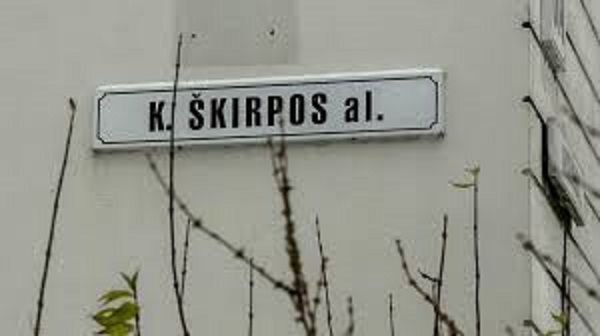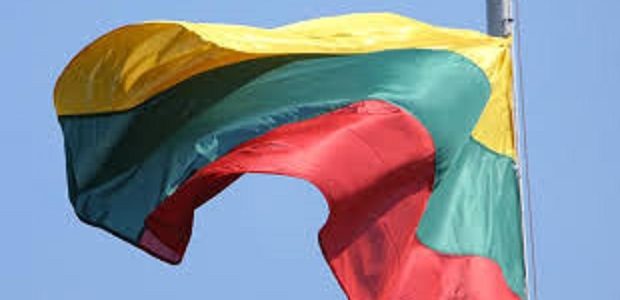On January 1 every year a ceremony is held to replace the Lithuanian flag on the tower on the hill of Gediminas in central Vilnius, to mark Lithuanian Flag Day. Traditionally, the older flag is given over to the protection of one of the Lithuanian schools which has been noted for teaching civics and preserving historical memory.
The modern Lithuanian tricolor, the symbol of the independent Republic of Lithuania, was first raised on the tower on January 1, 1919. It was flown by a group of Lithuanian volunteers led by Vilnius city commandant Kazys Škirpa. The raised flag was saluted with gunfire and the volunteers sang the national anthem.
Today a small road next to the hill of Gediminas is named after Kazys Škirpa. For several years now the Lithuanian Jewish Community has been petitioning the municipality of Vilnius to change the name of the street named after a Holocaust perpetrator. The LJC’s position is quite clear: Kazys Škirpa Alley needs to be renamed if only to show respect for all the citizens of Lithuania.
Škirpa served Hitler and worked with Nazi military intelligence. Marking the anniversary of the Holocaust in Lithuania, the historian Algimantas Kasparavičius pointed out the Lithuanian Provisional Government and the Lithuanian Activist Front, all of the LAF “government,” was under Škirpa’s command. The LAF’s political propaganda was equivalent to official fascist propaganda which led to the very active involvement of Lithuanians in carrying out the Holocaust. Kasparavičius says Škirpa made no secret of his enchantment with Nazi Germany. He lived there for 10 years, working as Lithuanian consul and later military attaché. Škirpa’s documents sent from Berlin to Kaunas in 1933 and 1934 demonstrate his appreciation for and enchantment with the policies carried out by Nazi Germany. He formed the LAF in Berlin in 1940. Their stated goal was to liberate Lithuania from the Soviet occupation and they organized an uprising in 1941 for this purpose, envisioning a Lithuania free of Jews. Škirpa was announced prime minister of the Lithuanian Provisional Government which stemmed from the June uprising. It was Škirpa’s idea to form the TDA battalion, the Tautinio darbo apsaugos batalionas. The TDA murdered thousands of Jews at the Seventh Fort in Kaunas.



